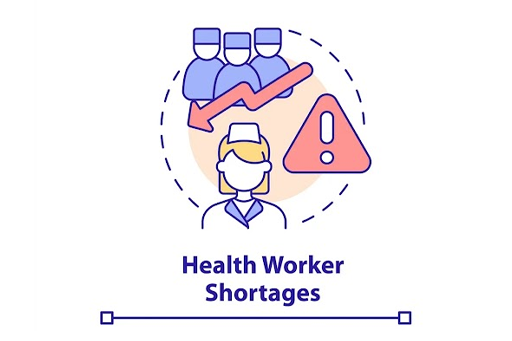
Best Practices in Discharge Planning and Transitions of Care

Effective discharge planning is a critical component of high-quality patient care. It not only ensures safe transitions between care settings but also plays a key role in minimizing preventable readmissions, reducing avoidable delays, and promoting continuity of care. Despite its importance, discharge planning is often approached as a last-minute task, rather than a strategic element embedded throughout the patient’s hospitalization.
As a physician in training, I witnessed firsthand how discharges were delegated to the post-call team, with the implicit message that discharging patients was a lesser priority compared to managing acute admissions. Later, as a hospitalist, it was not uncommon to discharge patients I had just met, with minimal time to communicate with the full care team or to assess the patient’s broader needs. These experiences reflect a larger, systemic issue: the persistent undervaluing of discharge planning in inpatient medicine.
To improve outcomes, we must rethink discharge as a process that begins at—or even before—admission, and that is integrated throughout their acute care stay. The goal of hospitalization should be not only to stabilize acute medical issues but also to prepare the patient for safe, sustainable care in the community. Below are key principles for reimagining discharge planning, with a focus on how digital tools can enhance coordination, patient engagement, and overall effectiveness.
- Begin Discharge Planning at Admission
One of the most consistently emphasized best practices across the literature and in guidance from regulatory agencies is the importance of initiating discharge planning early. Ideally, this process begins at admission, and in some cases—such as planned procedures—even before hospitalization.
Early discharge planning allows the care team to anticipate and proactively address barriers to a safe transition. It reduces delays in care, minimizes the risk of last-minute surprises, and enables a coordinated approach to follow-up care.
Importantly, recent analyses have called into question the widespread push for “early discharge” as a standalone metric. According to ACP Hospitalist (2023), initiatives aimed solely at accelerating discharges often fail to improve hospital throughput and can have unintended consequences. In many cases, these efforts result in rushed care plans, missed follow-up needs, or unprepared caregivers. As one expert noted, “While the intent is good, initiatives that focus solely on discharge timing may be low-yield or even harmful.”
Instead, health systems should focus on building infrastructure that enables real-time care coordination, supports team-based workflows, and ensures all transitions are medically and socially appropriate. Introducing patients to digital tools—such as remote monitoring or post-discharge check-ins—at the beginning of the hospital stay is another effective way to normalize their use and improve engagement.
Where Digital Tools Support Patients and Help Clinical Workforce:
- Digital care planning platforms can initiate and track discharge steps from day one, assigning tasks to care team members and surfacing social or clinical risks early.
- Text message prompts can remind patients and caregivers of discharge-related activities (e.g., home setup, follow-up appointments) well before discharge day.
- For staff, early alerts can improve coordination between case management, nursing, and physicians by syncing workflows across departments in real time.
- Engage Patients, Families, and Caregivers Throughout the Hospital Stay
A successful discharge plan requires the active participation of patients and their caregivers. Hospitalization is often overwhelming, and patients may struggle to absorb or recall instructions given at the point of discharge. Engaging family members or trusted decision-makers early ensures there is shared understanding, especially when the patient is too ill or cognitively impaired to participate meaningfully in their care.
Research consistently shows that individualized discharge planning that includes caregiver input leads to lower readmission rates, improved patient satisfaction, and higher quality of life scores. Moreover, access to digital patient portals and communication tools has been shown to increase patients’ sense of control over their care and to improve their ability to manage chronic conditions after leaving the hospital (Pellet, 2016; An, 2015).
Digital platforms also allow for real-time communication with family members who may not be present at the bedside. Caregivers can be looped in for education, discharge instruction reviews, or video demonstrations of home care tasks.
For patients with complex needs, involving family caregivers in digital rounding or case management updates can help ensure appropriate resources are in place prior to discharge, such as durable medical equipment, home health services, or follow-up appointments. This proactive inclusion can be the difference between a safe transition and a costly readmission.
Where Digital Tools Support Patients and Help Clinical Workforce:
- Texting platforms allow patients to ask questions or request clarification from the care team asynchronously, reducing communication gaps.
- Caregiver messaging access allows remote family members to receive discharge education, video demos, or status updates—improving preparedness and lowering stress.
- Staff can use these tools to efficiently coordinate with caregivers, schedule virtual meetings, and clarify roles in care after discharge.
- Provide Consistent, Accessible Patient Education
Education is a core component of safe discharge planning. Unfortunately, it is often relegated to a rushed verbal explanation or a printed handout given on the day of discharge—usually when patients are tired, anxious, or distracted.
Instead, education should be a continuous process, beginning early in the hospital stay and reinforced multiple times in ways that are accessible and culturally appropriate. Education should be provided in the patient’s preferred language and at a literacy level that ensures comprehension. This includes reviewing medication changes, demonstrating proper use of medical devices, and discussing red flags that warrant follow-up.
Medication reconciliation—a key part of discharge education—should be performed in partnership with the patient and their caregiver. This is an opportunity not just to list prescriptions, but to clarify why medications have changed, identify potential side effects, and ensure the patient can obtain and take them correctly.
Digital platforms offer tremendous potential in this area. Video-based education, interactive modules, and condition-specific resources can be deployed throughout a patient’s hospital stay, allowing for repetition and reinforcement. These tools can also be used post-discharge to review instructions or answer common questions, further enhancing patient safety.
Where Digital Tools Support Patients and Help Clinical Workforce:
- Text-based links to video tutorials, medication instructions, or FAQs can be delivered gradually throughout the stay, reinforcing understanding.
- Patients can receive tailored education in their preferred language and reading level via SMS or mobile apps—helping reduce disparities.
- Staff benefit by offloading repetitive education tasks to automated digital workflows, allowing them to focus on higher-complexity patient needs.
- Ensure Continuity of Care Through Strong Communication
One of the most significant breakdowns in the transition from hospital to home is the failure to communicate essential information to outpatient providers. In fact, only 23% of U.S. primary care physicians report being notified of their patient’s emergency department visit, let alone receiving a discharge summary in a timely fashion.
Closing this gap is essential. Continuity of care improves clinical outcomes and reduces the risk of complications after discharge. Hospitals should use digital tools and smart workflows to ensure that discharge summaries, test results, care plans, and medication changes are promptly and reliably shared with outpatient clinicians.
Moreover, digital platforms can help delegate tasks to the appropriate teams. For example, physical therapy feedback provided by a patient should be routed directly to the PT team, rather than filtered through nurses or clerks. This not only improves efficiency but ensures that feedback is acted upon quickly and documented appropriately for continuity post-discharge.
Effective digital handoffs also allow downstream providers—whether primary care physicians, specialists, or home health nurses—to access relevant clinical data and understand the context of the patient’s recent hospitalization. Ensuring this level of communication is no longer optional; it is foundational to patient safety.
Where Digital Tools Support Patients and Help Clinical Workforce:
- Automated texting tools can prompt patients post-discharge to confirm follow-up care, complete surveys, or ask questions, catching issues before they escalate.
- Discharge summaries, appointment details, and test results can be shared via secure portals or SMS, improving handoffs to primary or specialty care.
- Staff can use internal dashboards integrated with texting platforms to triage responses and delegate care coordination appropriately.
- Incorporate Interdisciplinary Team Input and Advance Care Planning
Discharge planning must reflect the collective input of the entire clinical care team. Nurses, social workers, case managers, physical and occupational therapists, nutritionists, and physicians all provide unique insights into a patient’s readiness for discharge and post-hospital needs.
Structured interdisciplinary rounds, conducted with a focus on discharge goals, are one way to ensure alignment. In addition, health systems should use decision-support tools that prompt clinicians to complete key steps—such as confirming home care referrals, scheduling follow-ups, and documenting advance care planning discussions.
Advance care planning, in particular, is often overlooked during hospitalization. However, for patients with serious illnesses or those at high risk of readmission, it is crucial to discuss goals of care and ensure these are clearly documented and communicated to post-acute providers and family caregivers.
Where Digital Tools Support Patients and Help Clinical Workforce:
- Interdisciplinary rounds can be enhanced with real-time digital notes, checklists, and collaborative care platforms that keep all team members aligned.
- Text reminders to clinicians can prompt documentation of goals-of-care discussions and referrals for home services or palliative care.
- Patients and families can receive texts with educational resources about advance care planning, preparing them for shared decision-making conversations.
- Address Non-Medical Barriers to Safe Home Care
Clinical stability alone is not sufficient for a safe discharge. Non-medical barriers—such as poor health literacy, lack of transportation, food insecurity, or unsafe home environments—can all undermine recovery and increase the risk of rehospitalization.
Hospitals must conduct thorough psychosocial assessments, ideally led by social work and care management staff. These should include screening for mental health conditions, substance use disorders, literacy, language access, caregiver availability, and access to technology.
Innovative use of digital tools can also support this effort. For example, patients or caregivers can use secure video or photo-sharing platforms to show their home environment, allowing clinicians to identify fall risks, medication storage issues, or the need for home modifications.
Understanding these social determinants of health and addressing them proactively is essential to ensuring a smooth and sustainable discharge.
- Interdisciplinary rounds can be enhanced with real-time digital notes, checklists, and collaborative care platforms that keep all team members aligned.
- Text reminders to clinicians can prompt documentation of goals-of-care discussions and referrals for home services or palliative care.
- Patients and families can receive texts with educational resources about advance care planning, preparing them for shared decision-making conversations.
Where Digital Tools Support Patients and Help Clinical Workforce:
- Text-based SDOH (social determinants of health) screeners can be used to collect data on housing, transportation, food insecurity, and more—early in the stay.
- Patients can text photos or videos of their home environment to case managers for virtual safety assessments.
- For staff, digital tracking tools can automate referrals to social services, community partners, or transportation programs, closing the loop on unmet needs.
Conclusion
Discharge planning is not a single event—it is a process that requires thoughtful coordination, proactive communication, and patient-centered engagement across the entire continuum of care. When approached systematically, and supported by the right digital tools, discharge planning can significantly improve patient outcomes, reduce avoidable readmissions, and enhance the overall experience of care for patients and families alike.
Hospitals must invest in infrastructure, training, and workflows that elevate discharge planning from a routine administrative task to a clinical priority. The future of safe, effective transitions lies in early planning, interdisciplinary collaboration, and the smart use of technology to extend care beyond the hospital walls.
By layering text messaging and digital tools across the care continuum, hospitals can convert fragmented discharge processes into coordinated, patient-centered transitions. This not only empowers patients and caregivers, but also reduces staff burden, boosts communication, and helps organizations meet safety, satisfaction, and readmission goals more effectively.








